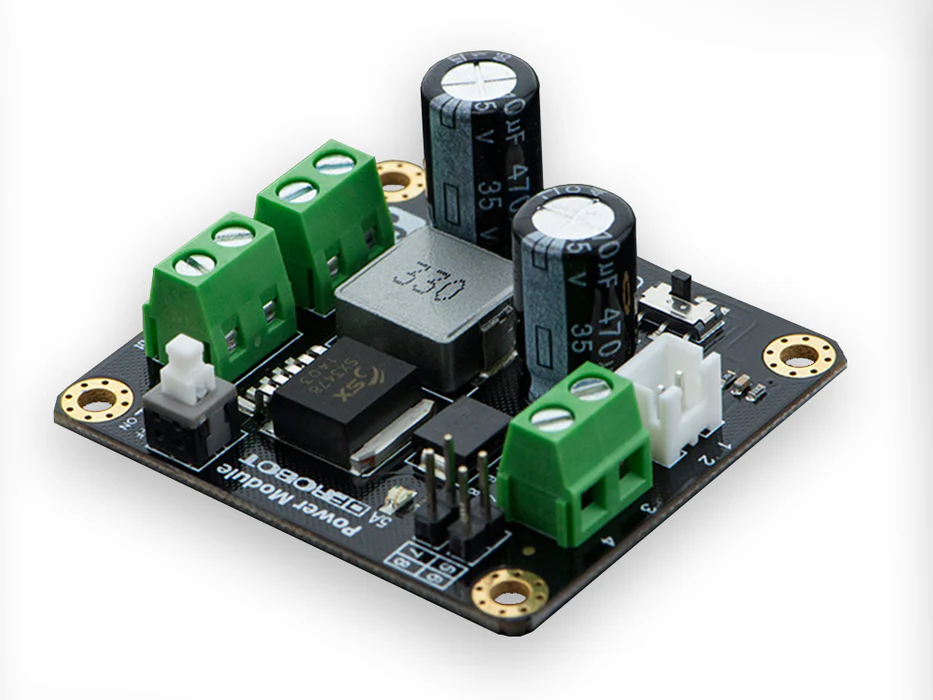
Overview
This Power Module is a small size 5A 350KHz 25V Buck DC to DC Converter.
It can convert any DC voltage between 3.6V-25V to a selectable voltage from 3.3V to 25V.
You can choose 5V direct output voltage with the switch or adjust the output voltage by the blue&white resistor.
It is convenient for you to choose three different interfaces of output.
The Ovout interface can output the original voltage of input.so that can be used as the power of other module.
The ON/OFF button on the board can be pulled high to turn the converter module on and low to turn it off.
Tech specs
- Input voltage range: 3.6V-25V
- Output adjustable range: 3.3V-25V
- Constant output current: 5A@5V
- Max Output Power: 25W
- Switching Frequency: 350KHZ
- Three different output interface
- One interface of origial voltage output






